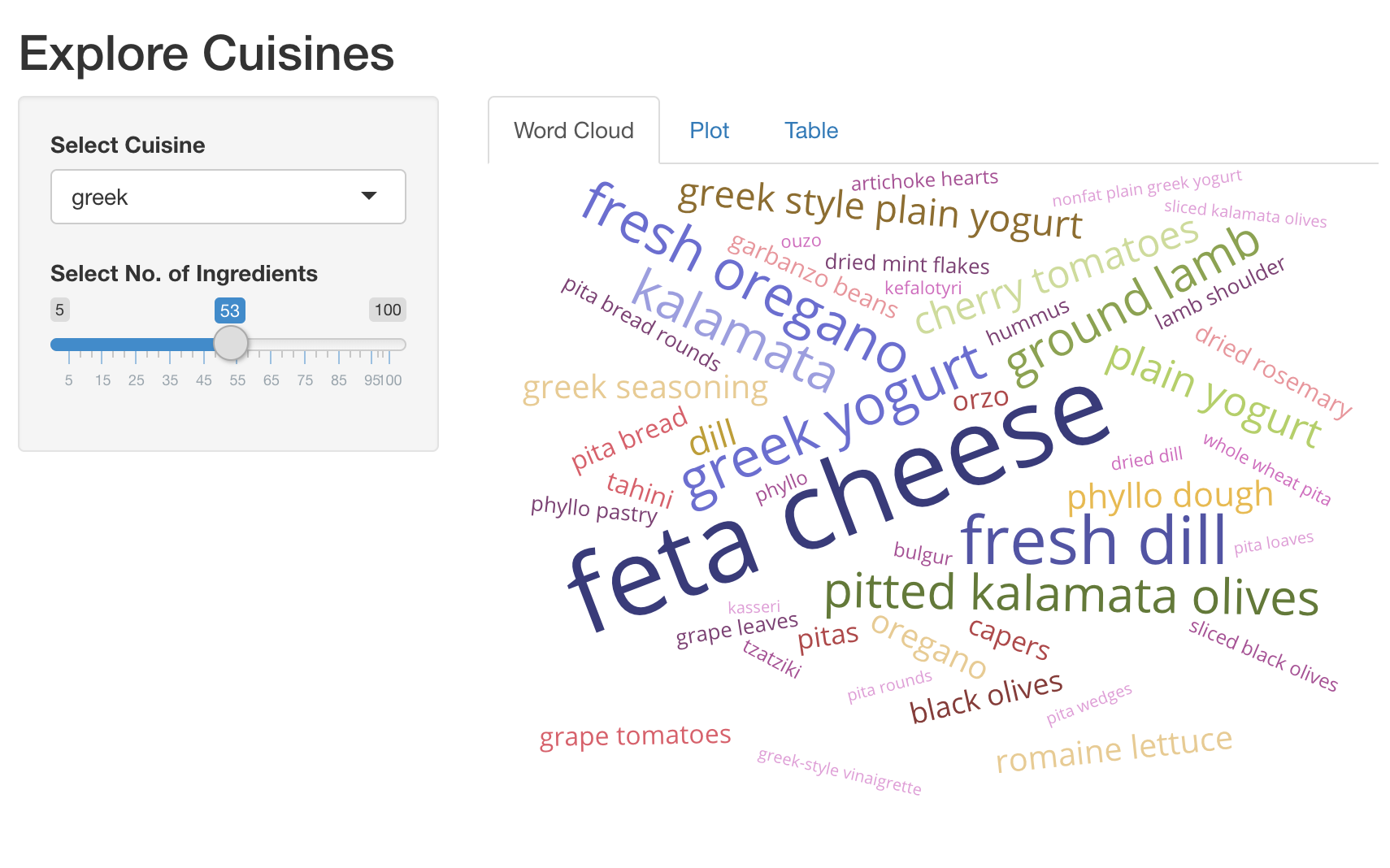Explore cuisines: wordclouds
Hope you are having fun building these foody Shiny apps! A handy way to visualize a lot of data is wordclouds. In this exercise, you will extend the Shiny app we built previously and add a new tab that displays the top distinctive ingredients as an interactive wordcloud.

We have already loaded the packages shiny, dplyr, ggplot2, plotly, and
d3wordcloud. Here is a handy snippet to create a wordcloud.
d3wordcloud(
words = c('hello', 'world', 'good'),
freqs = c(20, 40, 30),
tooltip = TRUE
)
Cet exercice fait partie du cours
Building Web Applications with Shiny in R
Instructions
- UI: Add a
d3wordcloudOutput()namedwc_ingredients, and wrap it in atabPanel(). This should be the firsttabPanel()in your app. - Server: Render an interactive wordcloud of top ingredients and
the number of recipes they get used in, using
d3wordcloud::renderD3wordcloud()and assign it to an output namedwc_ingredients. You'll need to use the reactive expressionrval_top_ingredients()to return a data frame of the top ingredients with recipe counts.
Exercice interactif pratique
Essayez cet exercice en complétant cet exemple de code.
ui <- fluidPage(
titlePanel('Explore Cuisines'),
sidebarLayout(
sidebarPanel(
selectInput('cuisine', 'Select Cuisine', unique(recipes$cuisine)),
sliderInput('nb_ingredients', 'Select No. of Ingredients', 5, 100, 20),
),
mainPanel(
tabsetPanel(
# CODE BELOW: Add `d3wordcloudOutput` named `wc_ingredients` in a `tabPanel`
tabPanel('Plot', plotly::plotlyOutput('plot_top_ingredients')),
tabPanel('Table', DT::DTOutput('dt_top_ingredients'))
)
)
)
)
server <- function(input, output, session){
# CODE BELOW: Render an interactive wordcloud of top ingredients and
# the number of recipes they get used in, using `d3wordcloud::renderD3wordcloud`,
# and assign it to an output named `wc_ingredients`.
rval_top_ingredients <- reactive({
recipes_enriched %>%
filter(cuisine == input$cuisine) %>%
arrange(desc(tf_idf)) %>%
head(input$nb_ingredients) %>%
mutate(ingredient = forcats::fct_reorder(ingredient, tf_idf))
})
output$plot_top_ingredients <- plotly::renderPlotly({
rval_top_ingredients() %>%
ggplot(aes(x = ingredient, y = tf_idf)) +
geom_col() +
coord_flip()
})
output$dt_top_ingredients <- DT::renderDT({
recipes %>%
filter(cuisine == input$cuisine) %>%
count(ingredient, name = 'nb_recipes') %>%
arrange(desc(nb_recipes)) %>%
head(input$nb_ingredients)
})
}
shinyApp(ui = ui, server= server)